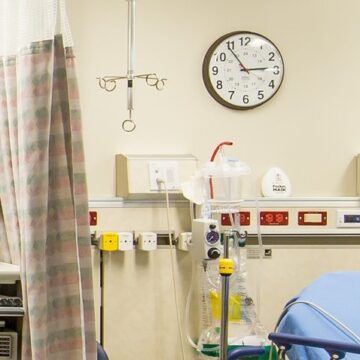Navigating the New Energy Landscape: The Impacts of IECC 2021 on Healthcare Development
- Perspectives

What is IECC 2021, and why does it matter?
International Energy Conservation Code (IECC) is a model code that sets minimum standards for energy efficiency in buildings. IECC is updated every three years to reflect the latest technological advances and best practices. IECC 2021 is the most recent version, which will take effect in many states and jurisdictions in the next few years, aiming to reduce energy consumption and greenhouse gas emissions, improve occupant comfort and health, and lower operating costs for building owners and tenants. For healthcare development projects, IECC 2021 presents both challenges and opportunities, as these facilities have complex and critical energy needs.
Here are five key considerations for healthcare developers and designers who want to comply with IECC 2021 and achieve high-performance buildings.

1. Increased Stringency and Flexibility
IECC 2021 is more stringent than the previous versions, requiring higher levels of insulation, air tightness, lighting efficiency, and renewable energy. However, it also offers more flexibility and options for compliance, such as the Energy Rating Index (ERI) pathway, which allows for trade-offs between the building envelope and mechanical systems, and the performance-based compliance option, which uses energy modeling to demonstrate energy savings. IECC 2021 also recognizes the diversity of healthcare facilities and, for the first time, provides specific provisions for different types of buildings, such as outpatient, inpatient, and long-term care facilities.
2. Enhanced Ventilation and Indoor Air Quality
IECC 2021 incorporates the latest standards from ASHRAE, which address the ventilation and indoor air quality requirements for healthcare facilities. These standards aim to prevent the spread of infections, ensure adequate fresh air supply, and maintain optimal temperature and humidity levels. IECC 2021 also encourages the use of energy recovery systems, demand-controlled ventilation, and natural ventilation, where feasible, to reduce energy consumption and improve indoor environmental quality.
3. Integration of Renewable Energy and Storage
IECC 2021 requires that all new buildings have a minimum amount of renewable energy generation on- or off-site, depending on the building size and type. For healthcare facilities, this can be achieved by installing solar photovoltaic (PV) panels, wind turbines, or other renewable energy sources. IECC 2021 also allows for the use of battery storage systems, which can store excess renewable energy and provide backup power in case of grid outages. These systems can enhance the resiliency and reliability of healthcare facilities, as well as reduce their carbon footprint and utility bills.
4. Adoption of Smart Technologies and Controls
IECC 2021 promotes the use of smart technologies and controls, such as sensors, meters, monitors, and automation systems, to optimize the energy performance and operation of healthcare facilities. These technologies can enable real-time data collection and analysis, remote management and diagnostics, and adaptive and predictive control strategies. IECC 2021 also requires that all buildings have sub-metering for major end uses, such as lighting, heating, cooling, and plug loads, to facilitate energy reporting and benchmarking.
5. Access to Financial Incentives and Tax Benefits
Development for IECC 2021 compliance doesn’t necessarily cost more in this era of increased financial incentives for energy-conserving technologies. For example, the recently passed Inflation Reduction Act of 2022 (IRA 2022) extends and enhances the 179D tax deduction, allowing for a deduction of up to $5.65 per square foot for buildings that achieve 50% or more energy savings compared to a baseline IECC (90.1) standard. Additionally, IRA 2022 provides up to a 50% refundable tax credit for investment in renewable energy, energy storage, and/or geothermal energy properties. When considering these incentives, investing in compliance with IECC 2021 in 2024 and beyond is a no-brainer.
What’s next? Building your team of experts.
Achieving compliance with new energy codes can be challenging for healthcare owners and developers, as it requires a comprehensive and integrated approach to energy efficiency and sustainability. However, with the right guidance and team of experts, it can also be a rewarding and profitable endeavor, as it can result in better buildings that benefit the environment, the occupants, and the ownership.
With over 30 years as a leading high-performance sustainability consultant, BranchPattern navigates climate action, new energy codes, and incentive programs, helping developers and non-profits to obtain additional funding. Services include, but are not limited to, energy modeling, commissioning, retro-commissioning, energy audits, renewable energy feasibility studies, and energy management and optimization. BranchPattern also helps clients achieve sustainability goals and certifications, such as LEED, WELL, Fitwel, and Living Building Challenge.
To learn more about how BranchPattern can help you with your development project, visit www.branchpattern.com or contact Rick Maniktala at ImprovingLife@BranchPattern.com.




